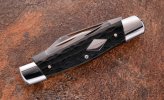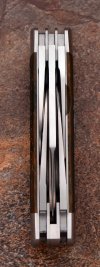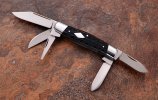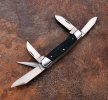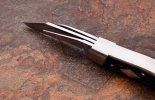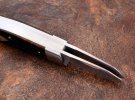-
The BladeForums.com 2024 Traditional Knife is available! Price is $250 ea (shipped within CONUS).
Order here: https://www.bladeforums.com/help/2024-traditional/
You are using an out of date browser. It may not display this or other websites correctly.
You should upgrade or use an alternative browser.
You should upgrade or use an alternative browser.
A Brief Study On Swedges
- Thread starter KnifeHead
- Start date
- Joined
- Feb 3, 2001
- Messages
- 32,359
- Joined
- Aug 20, 2008
- Messages
- 286
Great thread, Knifehead! What is the Kerry Hampton update? Anybody ever hear from him anymore?
KnifeHead
Knifemaker / Craftsman / Service Provider
- Joined
- Apr 5, 2006
- Messages
- 5,575
- Joined
- Oct 11, 2001
- Messages
- 3,743
A Kerry Hampton sighting! Good to "see" you here.
- Joined
- Oct 11, 2001
- Messages
- 3,743
I heard you were a zombie now (with a nice jeep.)There were rumors of me taking the dirt nap.
KnifeHead
Knifemaker / Craftsman / Service Provider
- Joined
- Apr 5, 2006
- Messages
- 5,575
I heard you were a zombie now (with a nice jeep.)
Yes...and by the way, I just bought 3 of those books on Amazon which have an excellent chapter on swedges, just sayin'.
- Joined
- May 9, 2010
- Messages
- 10,339
There were rumors of me taking the dirt nap.
rumors of your demise have been greatly exaggerated!
- Joined
- Oct 11, 2001
- Messages
- 3,743
Thanks for tripling this year's sales Kerry, and for all of the great knife photos you provided for the book.Yes...and by the way, I just bought 3 of those books on Amazon which have an excellent chapter on swedges, just sayin'.
- Joined
- Jul 31, 2002
- Messages
- 2,958
A correct swedge will end before it gets to the tip of the blade. Otherwise, blade sharpening over time could potentially involve the swedge resulting in an ugly blade.
I understand the reasoning here, and realize many folks out there want this. I have never agreed though, and even as a kid I modified my factory knives to make the swedge go all the way to the very tip. Mainly because of another nice reason for the swedge- to make the tip much sharper and pointier for piercing and poking. I even sharpened it (just last few millimeters so it was still protected when folded) so it was essentially double edged right at the end.
When the main edge gets worn enough to make the swedge look funny, that also means the edge/tip area has gotten too thick, so I'd regrind the blade, or at least the tip area on my stones to restore it. Maybe not everyone would do that, but it's important to me.
Will Power
Gold Member
- Joined
- Jan 18, 2007
- Messages
- 33,647
Swedge Master Kerry 





Last edited:
- Joined
- Aug 16, 2015
- Messages
- 65
Brilliant tutorial, Kerry. I learned so much. I was searching the online Oxford English Dictionaries for the definition of a swedge ("Scottish informal: A fight or brawl. Origin: Perhaps related to dialect swag, ‘sway heavily’"). I should have checked Bladeforums first.
Many thanks,
Mark H.
Many thanks,
Mark H.
- Joined
- Apr 7, 2019
- Messages
- 51
Very cool thread worth a bump.
Interestingly, I have a Case TB teardrop with a swedge on the pen blade that goes all the way to the tip...
Interestingly, I have a Case TB teardrop with a swedge on the pen blade that goes all the way to the tip...
SwissHeritageCo
Knifemaker / Craftsman / Service Provider
- Joined
- Jan 8, 2021
- Messages
- 3,614
Thanks for this, I've always wondered about the origins of the swedge. Personally not a fan of them and was always curious as to their creation 

- Joined
- Mar 20, 2017
- Messages
- 1,132
Wakeup SleepyThread!
Look at how all those blades get stuffed into this frame. This is a R.Bose 5-blade Diamond Edge Cattle Knife from 2014.
View attachment 2093109View attachment 2093110
View attachment 2093111View attachment 2093112View attachment 2093113View attachment 2093114
what is the width at the ends of the knife, the bolsters?
KnifeHead
Knifemaker / Craftsman / Service Provider
- Joined
- Apr 5, 2006
- Messages
- 5,575
The scales/bolsters are assembled on a liner that is .155" in stock thickness and then reduced during finishing. The overall thickness of the knife, depending on stock thicknesses used, will end up being somewhere around .700". Take note that the inner cut liners on either side of the master (center) blade are thicker than the scale liners. This is to allow room for the crinked blades on either side of the master blade when closed. Cut liners and swedges make this all work.what is the width at the ends of the knife, the bolsters?

